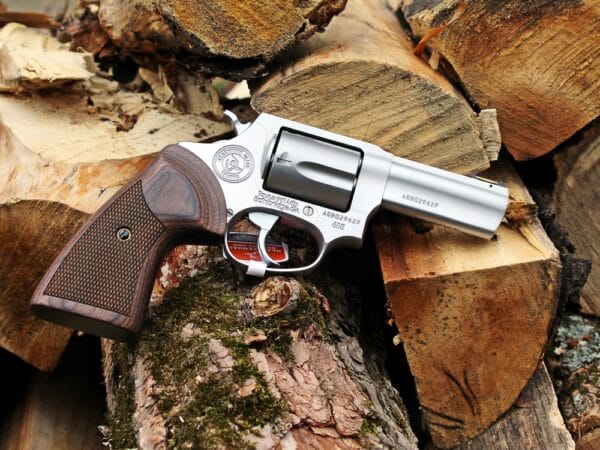
The world of concealed carry as of this date revolves around, for the most part, striker-fired, semi-auto pistols. You can’t throw a rock in a room of concealed carriers without it bouncing off at least two folks with a Glock or other brand of self-shucker hidden away. But it wasn’t always that way, as “archaic” wheelguns once ruled the roost.
My proverbial carry gate swings both ways… I have carried both semi-autos (I really like my Springfield Armory Hellcat RDP and Ruger LCP Max) and revolvers (a favorite is my shiny, three-inch Charter Arms Mag Pug in .357. It’s very similar to the Taurus we have here).
Live Inventory Price Checker
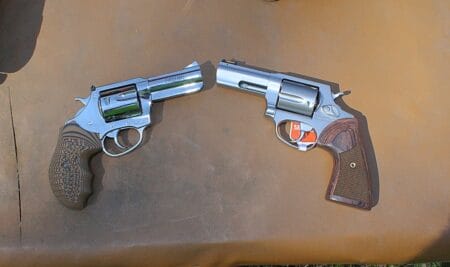

Back When…
Back in the day (late 1970s), concealed carry was verboten in most states, or at least was very hard to do. As for Indiana, you had to have a reason to carry (in letter form) sent to the State Police. “Societal paranoia” didn’t count. Consequently, CC licenses were hard to come by. So, we didn’t read a lot about concealed carry in the shooting magazines of that era. In terms of handguns, what we DID read about were mostly 1911s and .38/.357 Magnum revolvers, with the odd .22 and .44 thrown in for good measure. 9mm wasn’t too big of a thing at that point.
The 800-pound gorilla of handgun competition then was NRA Bullseye and guns for it that were duly written about. It was about this time that a retired Marine Corps Colonel started making waves out west with what he described as the “modern technique” of pistol shooting. Jeff Cooper and his adherents changed the face of handgun competition with 1911s and the .45 ACP. Meanwhile, the revolver was still pretty much the go-to handgun for shooters who didn’t want to use semi-autos.
Enter The .357 Magnum.
The .357 Magnum has always been on the CC radar, but the .38 Special was probably more popular in days gone by. There were a few short-barreled .357s out then, but not like what we have now. I have before me a .357 that I wish had been around when I started shooting. The .357 Magnum is usually found in revolvers with barrel lengths of four to six (or even eight) inches, but this little guy is different. Here we have the Taurus 605 Executive Grade with its three-inch barrel.
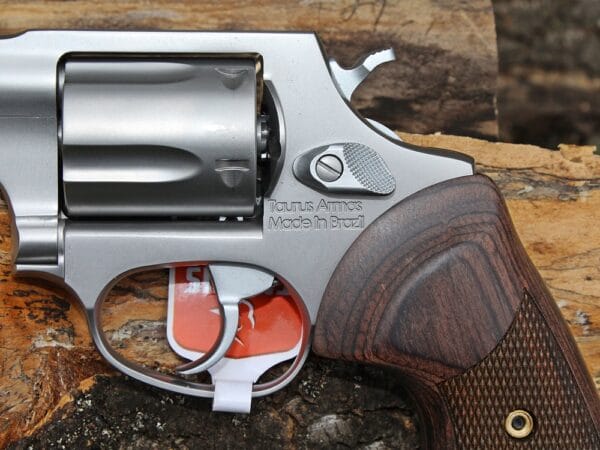

Talk about easy to tote! This revolver is a five-shooter that takes speedloaders made for some of those other brands of snub-nose revolvers. Taurus has a bit of experience where revolvers are concerned. They started making them in 1941 with the Model 38101SO. Their wheelguns tend to be well-respected by many shooters, and this one is no exception.
Why The Taurus 605 Executive Grade Is Special
So, what makes the Taurus 605 Executive Grade special? (I’ll shorten it to “E605” from here out, as it IS different than a “plain” 605). Three words: Attention To Detail.
The Taurus 605 has been a good seller since its introduction in 1995, with 10 models currently in production. Here, they’ve taken the basic 605 and all but re-invented it for the upscale market. Its fit, finish, action, chamfered chambers, sights, polishing, etc. are well above what happens to a plain-jane 605. Concealed revolver carriers like the fact that they can get some serious “muzzle muscle” of the .357 variety out of a gun not much bigger than an Airweight .38. (I know, it’s a 3-inch barrel and that cuts down on velocity some but the .357 still does better out of a short barrel than does the .38). It weighs about 10 ounces more, of course, than an Airweight. I don’t believe I’d want to shoot full-bore .357s out of a 14-ounce gun. They do make them, I know, but I wouldn’t shoot .357s out of one!
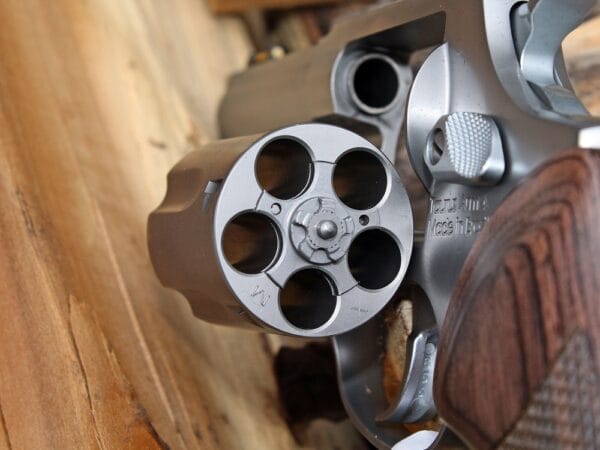

Specs
- Length: 7.5 in.
- Width: 1.41 in.
- Height: 4.8 in.
- Weight: 23.5 oz.
- Capacity: 5 rounds; chambers are chamfered for fast loading
- Sights: Fixed gutter rear; front brass rod/bead
- Action: DA/SA
- Construction: Stainless steel
- Included: Nanuk 909 case; manual
Taurus has gone “back to the drawing board” with this one. As I mentioned above, they’ve surpassed the normal 605 in terms of finish, fit, and action work… this is not your run-of-the-mill snubby .357. The price is one giveaway… the base 605 runs only $477. The fancy Altamont walnut grips help, too. It is one nice-looking revolver – I hope my photos do it justice.
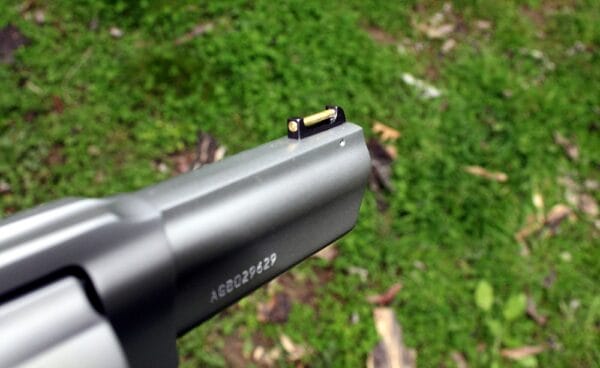

Executive Grade
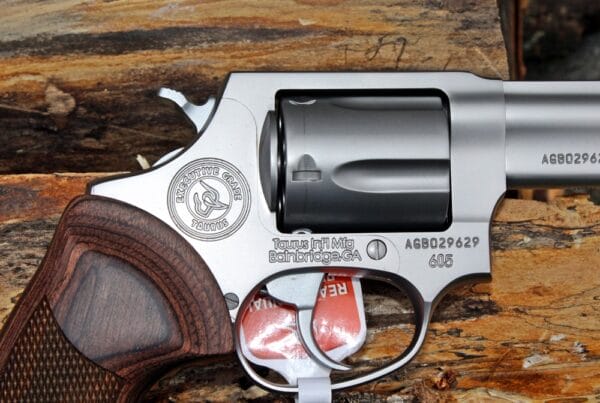

The Executive Grade line of revolvers from Taurus was introduced in May of 2022 and is comprised of three guns… the bobbed-hammer $680 Model 856 .38 Special, this $758 .357 Magnum, and the (newest in the line) $950 Judge. All guns in the series are stainless steel with similar characteristics in terms of finish, sights, grips, etc. They are all a cut above. When you open the (very nice!) $60 Nanuk 909 case these guns come in, you’re greeted by an envelope that contains the manual and other enclosures. Upon the envelope is printed “You’ve Been Promoted”. You are now an Executive and have the gun to prove it!
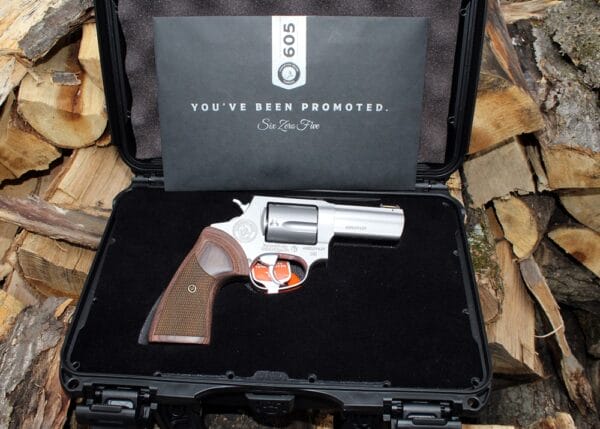

Why You Need One
I realize that my readership tends to be on the younger side (well, younger than me at any rate) and may not have much experience with revolvers. So, why would you want to shell out big bucks to buy one of these? In a word, simplicity.
Simplicity is the revolver’s forte.
I tend to be approached (since I write about guns and must be an expert, right?) by friends and family who would like to get started in shooting. This is strictly informal, of course, at my backyard range. I will let them try some of my guns and then talk with them about their experiences. I’ll hand them guns that may include a .22 revolver, .22 semi-auto, 9mm semi-auto, and a .357 Magnum with light .38 Specials. The point is not to show them what a great he-man-shooter I am with the hippopotamus loads, but to have them shoot several guns to see what they like best and what works for them. Some of them, after our trigger time together, will go to my friend Duane’s gun shop and buy a gun. Both he and I encourage them to get professional training at that point.
So, why tell you this? Because, after almost every time I’ve placed varied pieces of shooting hardware in their hands, they tell me they like the .357 revolver the best of the centerfire calibers. They tend to shy away from my semis, due to the drill required to get it ready to shoot and to keep it shooting. Now, understand, that these are friends or relatives and not “gun people” who are considering buying a handgun for home protection or are just curious — they’re not looking to buy a gun to carry. Many will buy a .22 revolver, but I’ve had one or two end up with a .357 wheelgun. (I recommend they shoot .38 Specials until they’re comfortable with .357 Magnums). I’ve had a couple buy a semi-auto, but it seems that wheelguns win more times than they lose.
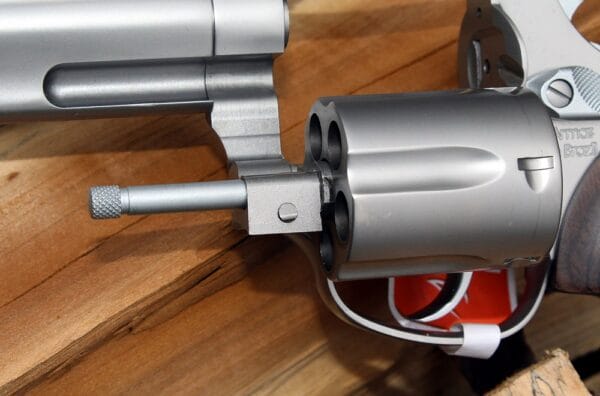

The point of this little exercise is to show that revolvers still have a place in modern shooting. Supporting that, I know more than one experienced concealed carrier who pack a wheelgun regularly.
More Reliable?
Since we’re reviewing a revolver and have mentioned semi-autos, let’s put to rest one myth right now… that semi-autos are not as reliable as revolvers. You might have expected me to take the opposite viewpoint since this is a revolver review, but facts are facts.
Granted, since semis are magazine-fed, there is always the possibility of a stoppage. But, with modern magazines and ammo, good gun handling, and a clean gun, those are not as prevalent as maybe they once were. On average, I would say that the “well-fed” semi-auto has no more stoppage problems than a revolver, all things being equal. This includes the dreaded “limp-wrist”… horrors!
So why do many of those shooters I know end up with a revolver?
When I ask them that, they tell me that they don’t want to have to learn the steps required to shoot semi-autos… how to load the magazine, charge the pistol, deal with safeties (if present), and clear jams that might occur. They find it much easier to pop the cylinder open, charge the chambers, close it, aim, and pull the trigger. If the gun doesn’t go “bang,” they simply pull the trigger again and do not have to “tap-rack-bang.” They are willing to trade the inferior capacity and loading time that revolvers have to avoid those semi-auto issues. The look of “oh-no-what-now?” on the face of the new shooter with a jammed semi-auto gives them a reason to consider other options.
How’s It Shoot?
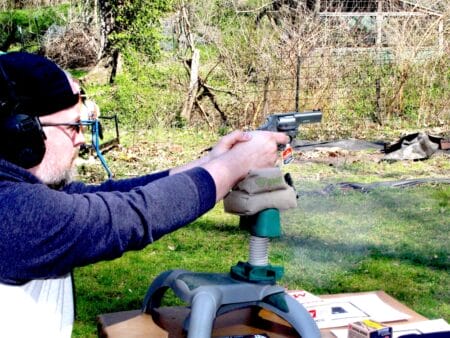

I like reviewing (or just plain shooting) .357s because I get two guns in one. Inside every .357 lurks its meeker cousin, the.38 Special. I would venture a guess that most .357 Magnum shooters who take their guns to the range will spend most of their time shooting .38 Specials, especially if the gun is abbreviated in terms of weight like our E605. I mentioned above that I do not like shooting fire-breathing (literally) .357s out of a lightweight revolver. This Taurus weighs about 24 ounces… that’s on the verge of being a “handful” but not quite. As stated above, I own a Charter Arms Mag Pug three-inch, very shiny stainless 5-shooter that weighs about the same as this E605. I wouldn’t want to put a full box of magnums through either one of them during a range session.
So, expecting my shooting hand’s palm to get good and whacked, I set up targets at 15 yards. I let fly with some magnums and some specials, details are below. The gun IS a shooter, but the recoil coming from a 24-ounce .357 Magnum can wear you down. Only you can decide how many times you’re going to want to pull that trigger before crying “Uncle”…
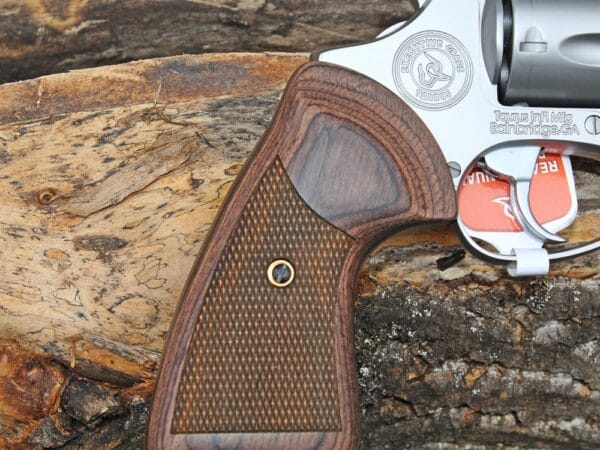

Thirty-eight specials were the proverbial piece of cake. I could shoot them all day. The magnums, on the other hand, became too much of a good thing. I could sure tell them apart by their noise and recoil. If you don’t believe me, hear this… I was shooting my Charter Arms Mag Pug and had randomly loaded the cylinder with 2 magnums and three specials, for a drill. I could certainly tell which were which! my son, standing behind me, commented as well. Try that the next time you shoot and you will prove something to yourself – there is a difference that you can feel and hear. That’s why most shooters who own a sub-25-ounce .357 shoot more .38s through it than the big boomers. (The same thing applies to .44 Special and Magnum calibers… been there, done that).
Here’s a photo of some of the ammo we tried…
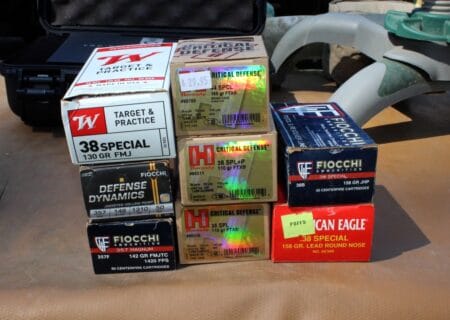

Now, here are a few 15-yard targets. We shot a lot but I’m not going to bore you with my mediocre shooting skills. I picked three targets to include.
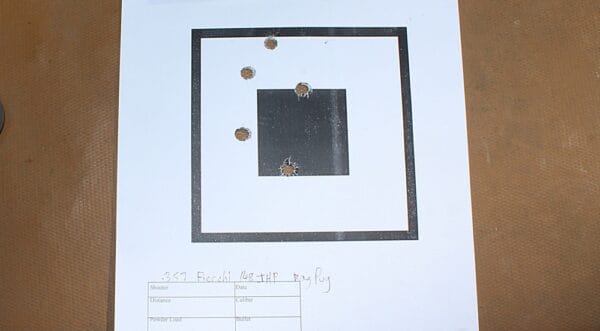

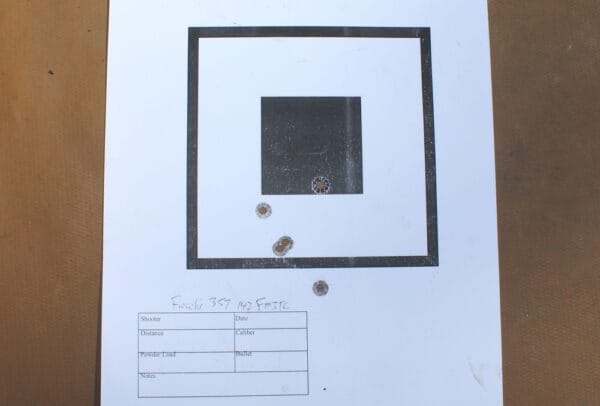

Interestingly, the E650 shot the magnum loads for us better than the specials, hence the magnum-only targets. That’s not usually the case. In my experience, small-frame .357s typically do better with lower-powered loads. The E605 is not a bullseye gun, nor was it designed to be. The sights were regulated decently well, except for a small offset to the left. It’s not enough to worry about. As a concealed-carry revolver, I’d much rather have this with me than a snubby .38.
The trigger broke right at 6 lbs., 3 oz. (SA) and 11 lbs., 5 oz (DA). These are not the lightest pull weights, but the trigger is pretty smooth throughout either pull with no stacking. Again, this is in keeping with the mission of the gun. You don’t want to have to explain a negligent discharge on top of everything else to the police if you have to use the revolver in a self-defense situation. Practice will help you overcome any perceived trigger shortcomings.
To Sum Up
Are you a semi-auto aficionado who is thinking of maybe branching out into the revolver world? Or, are you (like me) an unrepentant revolver guy from way back? Looking for a carry gun with fewer “bells and whistles”? Take a look at the Taurus 605 Executive Grade. Taurus has done a great job with the ten guns that comprise the 605 line, and the Executive version goes over the top. This is one reliable, good-looking revolver that should give you years of service. It’s a borderline BBQ Gun, but that’s OK — this is not just another “pretty face.” This thing works as intended, no matter what it looks like. So… are you ready to grab this “Bull” by the horns?
About Mike Hardesty
With experience spanning over 45 years, Mike Hardesty has long enjoyed shooting and reloading. An inveterate reloader, he casts bullets and reloads for a diverse array of firearms, each handled with long-practiced precision. Living in rural Indiana, his homestead boasts a personal 100-yard range where he shares his love for guns to his four sons, their wives, and eleven grandchildren. As a recognized author, his writings have been featured in notable platforms like Sniper Country, Bear Creek Arsenal Blog, Pew Pew Tactical, TTAG, Dillon Precision’s Blue Press, and Gun Made, revealing his ongoing passion for firearms at the age of 72.
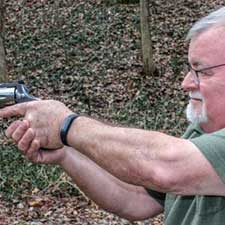

Some of the links on this page are affiliate links, meaning at no additional cost to you, Ammoland will earn a commission if you click through and make a purchase.





